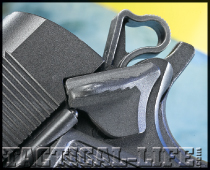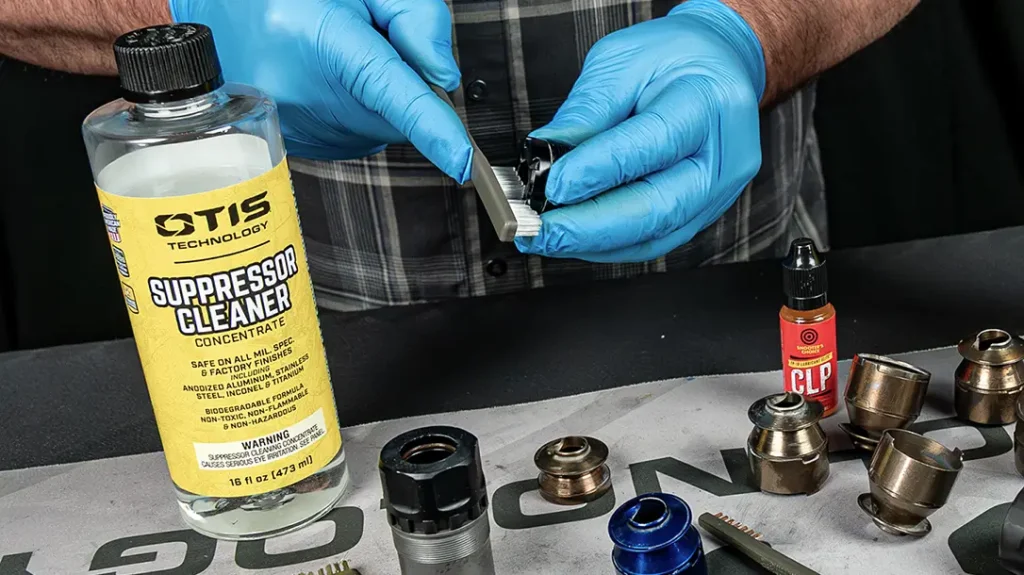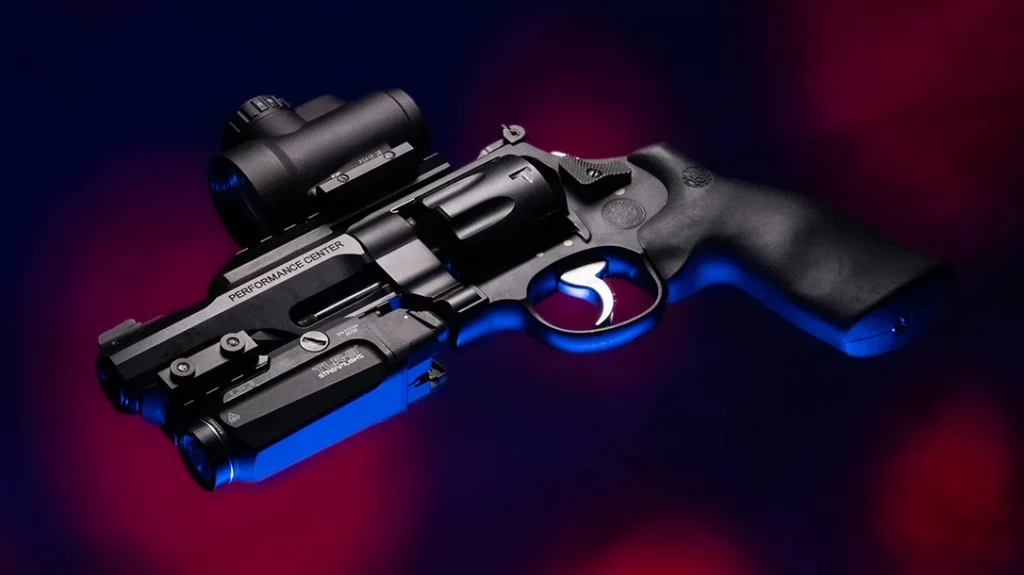Para USA is well known for its large-capacity 1911s, innovative Light Double Action trigger system and its improved Power Extractor for the 1911. Para USA makes a wide range of 1911s, all of which have one or more features that were formerly custom modifications. What the company didn’t make was a basic 1911, one which does not include many of these modifications, but is priced right while delivering a quality, basic 1911. Now Para does—the GI Expert model.
 Who wants a plain, ordinary 1911? Tons of people do. While this might be a surprise to those devotees of the 1911, sometimes all that is wanted or needed; a basic, no-frills 1911 in caliber .45ACP that doesn’t cost an arm and a leg. The prospective buyer might be basing his criteria on such things as having handled and shot the GI 1911 “brought back” by his granddad or an uncle who served in the military in World War II, Korea or even Vietnam. Having shot such a sample, he also might well recall the trigger pull was hard, sights were hard to see and after he fired a few shots, the web of his hand was bleeding, having been caught between the raised hammer and the grip safety when the slide cycled. He would want a basic 1911 with improvements in those problem areas.
Who wants a plain, ordinary 1911? Tons of people do. While this might be a surprise to those devotees of the 1911, sometimes all that is wanted or needed; a basic, no-frills 1911 in caliber .45ACP that doesn’t cost an arm and a leg. The prospective buyer might be basing his criteria on such things as having handled and shot the GI 1911 “brought back” by his granddad or an uncle who served in the military in World War II, Korea or even Vietnam. Having shot such a sample, he also might well recall the trigger pull was hard, sights were hard to see and after he fired a few shots, the web of his hand was bleeding, having been caught between the raised hammer and the grip safety when the slide cycled. He would want a basic 1911 with improvements in those problem areas.
For whatever reason, this fellow has settled on getting a full-size 1911 but, as he shops for one, he finds that many of them are a bit pricey for his budget. While these 1911s have many features that justify the price, he still can’t afford one and he doesn’t really want or need the improvements they contain. The veracity or not of these surmises, 1911 makers have already responded to the low-end cost of the 1911 market and Para USA now joins in.
Advertisement — Continue Reading Below
To its credit, the GI Expert does not exactly duplicate a WWII GI pistol. The GI Expert follows the observations of Jeff Cooper, known as the “father of modern pistolcraft,” who opined that the 1911 was the best fighting handgun and all the pistol needed was a good set of sights and a decent trigger pull to be complete. That this pistol would be reliable apparently was a given to him. The GI Expert has these features, including reliability.
Gun Details
The GI Expert is a full-sized 1911 in dull black over a fine bead-blast finish offering adequate protection from handling or the elements if the finish is given regular attention. I found no offending sharp edges on the pistol. The slide top end is rounded and the stainless steel barrel, including the chamber, measures 5-inches. The barrel is not, as is normal for Para guns, ramped. An extended ejector of the type favored by many for more positive ejection is present. The slide has an enlarged (compared to an original 1911) ejection port window.
Amply sized front and rear sights are dovetailed into the slide, thus left-right sight adjustment can center shots on target if necessary. This sample shot to point-of-aim at 20 yards. The sights have the three-white-dot sighting aids with white enamel in the circular recesses, one in the slightly ramped front sight and two in the square-notch rear sight.
Advertisement — Continue Reading Below
For quick sighting, the front sight’s white dot is positioned between or just over the two rear white dots. Simply having the three dots so roughly positioned will provide enough alignment to make good close range (no more than 10 yards) hits. When time permits, an accurate shot can be made to the limits of the shooter’s abilities using the sights in the traditional manner.
A rounded, exposed and skeletonized hammer is grooved on its topside. The grip safety is of a shape that was first used in conjunction with the round hammer on the Colt Commander after WWII. The top of this grip safety, where the hammer abuts it in the cocking action of the slide, is concave to allow the fuller hammer design room enough to complete its cocking cycle. The benefit of combining the re-designed hammer and grip safety is to minimize “hammer bite” when firing, yet it does not increase the overall “footprint” of the gun.
A minor point for some, but great for others, is that while the grip safety is fully functional, it only needs to be slightly depressed to be disengaged. I tend to grip 1911s high up on the backstrap and sometimes with this grip I don’t have enough pressure on the bottom of the grip safety to disengage it. The 1911 grip safety pivots on, and is retained in, the frame by the thumb safety cross pin, so it needs to be moved inward at its lower end.
Advertisement — Continue Reading Below
Speaking of the thumb safety, the GI Expert follows the excellent design of post WWII Colts in that the grooved thumb safety ledge is tear-shaped, tapering inward at its rear. This configuration remains the best compromise of being wide enough that almost anyone can easily manipulate it even under great stress, while not protruding enough for its ledge to catch on the lip of a concealment holster, snag on clothing or, when manipulating the slide, stub a thumb on its forward edge. This part is well-fitted in the GI Expert, snapping solidly to its “on” and “off” positions. A grooved and flat mainspring housing is installed and duplicates the original 1911 design. The magazine well is slightly beveled.
The GI Expert, having a full-sized frame, accepts any single-column, full-size magazine. The gun ships with two 8-round, nickeled and heat-treated metal magazines, which have a removable polymer base plate and solid, formed polymer follower. Six cartridge witness holes are on either side of the magazine body. The vertically grooved magazine catch is of normal size at the bottom left rear of the rounded triggerguard. The slide catch is grooved on its upper face and is in its standard location above the triggerguard on the frame’s left side. The black polymer grips are checkered and retained with four slotted and blued screws. Para USA is the only 1911 manufacturer which puts rubber “O” rings around the grip screws. The “O” ring stops the screws from coming loose due to recoil.
The polymer trigger is grooved on its face and has three holes in its body, further lightening the trigger’s weight. The trigger pull weighs 4.5 pounds and does not have a trigger over-travel adjustment screw. This addition is desired and used by target shooters who want the least trigger movement so as to not disturb their sighting. However, not only is this not needed in a fighting handgun, having one can be fatal, since fiddling with it or having the screw turn inward due to vibration of recoil, can result in a failure to re-cock the gun.
Advertisement — Continue Reading Below
Range Time
Nasty weather motivated me to shoot indoors. Bad lighting is quite preferable to the freezing rain outside. Having disassembled and wiped down the GI Expert for photographs (note: there is no full-length recoil spring guide rod), I lubricated it, contrary to my usual “shoot it as it comes” routine. I do the latter simply to see how well the gun works when someone doesn’t read the manufacturer’s operating manual.
To settle everything in place, I put eight quick rounds of Winchester USA Personal Protection 230-grain JHP into an IDPA target 20 yards downrange. All hits were well centered, so I moved on to shooting for group. Seated at a gun table and I started firing at a set of three 5-shot “Dirty Bird” targets. The Winchester ammo gave me 2.5 inches. Then I managed to put four out of five rounds into 1.25 inches using Hornady 185-grain XTP, but having wobbled my sights on the last shot, the group opened up to 2 inches. My last target had CorBon 230-grain Performance Match JRN ammo going into a nice 2-inch group.
Again, contrary to my normal practice, I didn’t black out the two rear white dots. If I had, I think the groups would have been even better, but what I did get is what the buyer can expect if he still wants to have the speed sighting system. The white dots are great for this, the white in the rear dots distract me from focusing on the front sight for precision shooting.
Advertisement — Continue Reading Below
I finished up with some draw and fire work. Using a Galco Royal Guard inside-the-pants concealment holster, I emptied out some partial boxes of ammo, which included the following: 200-grain CCI Gold Dot, 230-grain JRN MagTech, 185-grain grain JHP Remington Golden Saber and a box of accidentally-water-soaked 230-grain JRN PMC ammo. The Para USA GI Expert digested all of them without a hitch.
Final Notes
All in all, and following the dictates of Jeff Cooper, the Para USA GI Expert is an improved version of the basic 1911, which is more than suitable for just about any reasonable application…a good fit in anyone’s holster for sport, personal protection or for simple casual shooting.
























